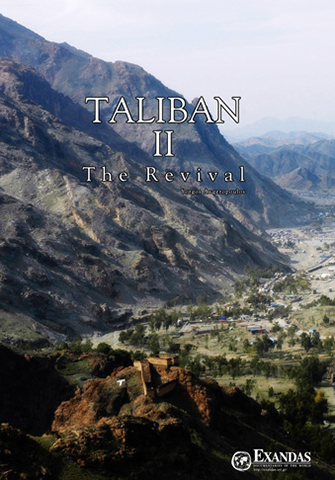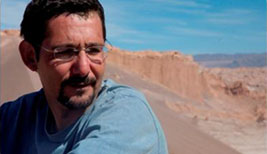
Taliban II, the Revival
Dir: Yorgos AvgeropoulosThe “revival of the Taliban” is a fact. And Pakistan is the new centre of developments in Central Asia, for it is from its grounds that the new waves of fighters with the black turbans, and their continuous attacks, unexpectedly shift the geopolitical map of Central Asia, as well as the international balances.
The hideout and base of operations of the “new Taliban” is located in the rough and inaccessible mountains of the border between Pakistan and Afghanistan. Not only western people, but even the authorities of Pakistan themselves are incapable of reaching Waziristan, the inaccessible region of the Pashtun Tribal Areas. The creators of this astonishing documentary managed to get remarkable access.
Watch the Film Now!
Choose the language you prefer and stream the film in Full HD from any digital device. Enjoy your private screening!
Buy the DVD
€11,04
Public Screening
Are you interested in organizing a public screening of our film? Send us an email with your inquiry and we will be glad to assist you!
Educational / Library Use
Are you interested in enriching the library of your institution with our film? Contact us and let's create together an informed public!
- DURATION: 58min
- AVAILABLE IN THE FOLLOWING LANGUAGES: English | Greek
- AVAILABLE VERSIONS: English (58min) | Greek (58min)
- YEAR OF PRODUCTION: 2007
- Written, Produced & Directed by: Yorgos Avgeropoulos
- Research Coordinator: Apostolis Kaparoudakis
- Production Manager: Anastasia Skoubri
- Director of Photography: Alexis Barzos
- Editing: Dimitris Nikolopoulos, Meletis Pongkas
- Original Music: Yiannis Paxevanis
- Graphics: Sakis Palpanas
PRODUCTION NOTES
Kamikazes strapped with explosives who blow themselves up in military bases of the US and allied forces; bombing attacks with remote control mechanisms against police stations and embassies, and attacks on government delegates and members of the judiciary; for the past two years, all of these compose the daily routine in Afghanistan.
The “revival of the Taliban” is a fact. And Pakistan is the new centre of developments in Central Asia, for it is from its grounds that the new waves of fighters with the black turbans, and their continuous attacks, unexpectedly shift the geopolitical map of Central Asia, as well as the international balances. The hideout and base of operations of the “new Taliban” is located in the rough and inaccessible mountains of the border between Pakistan and Afghanistan.
There, in the mountainous regions of Northwest Pakistan, covering an area slightly bigger than Cyprus, live the 3.5 million Pakistanis who belong to the tribe of the Pashtun, while approximately 12 million of their “brothers”, members of the same tribe, live on the other side of the border, in Afghanistan. They have lived there long before Alexander the Great crossed the Indian peninsula and they are known for their love for freedom and independence, as well as for their cruelty.
Not only western people, but even the authorities of Pakistan themselves are incapable of reaching Waziristan, the inaccessible region of the Pashtun Tribal Areas. The laws of the official state do not apply there, girl students are compelled to wear head scarves, music has been forbidden and, when walking in the town streets, one can even see that the faces of women have been wiped out from the publicity tabloids.
Exandas managed to cross the line of Peshawar and enter the unapproachable Tribal Areas of the Pashtun, “where no western foot has ever been set”.
And while the images of international news networks come from cameras “incorporated” in the Pakistani military forces, Exandas managed, through a collaborator, to pass a small camera into the Tribal Areas during the last year. His name cannot be revealed for safety reasons. However, the images recorded by this man, a native of the area as well as a Pashtun himself, are revealing:
The meetings of the Taliban and their preparations for oncoming clashes, their arsenal as well as recruitment strategies, their “trials”, based on the Sharia law, and the extremely severe and public executions of the penalties imposed by their religious courts.
Then, Yorgos Avgeropoulos and camera operator Alexis Barzos visited the madrassas, the religious schools in which the Taliban are indoctrinated in the holy war, the jihad. And in the markets of homemade weapons fabricated in the area, they sought the traces of Osama Bin Laden and the Al Qaeda, who is also making an appearance in Pakistan. They recorded the fiery speeches and preaching of the religious leaders, as well as the army’s tactics and the dubious results of the peace deal which was signed by the Government and the tribal leaders.
Where “operations against terrorism” take place, the victims of war are often unarmed and innocent civilians.
“Here, at the Bajaur madrassa, there were only innocent students. The school was bombed by aircrafts. This is what was left of our children?”, the locals denounce, speaking not only of the numerous attacks of the Pakistan army, but also of the US air force, on their grounds.
The country is preparing for elections, faltering between the government’s pro-American choices and the intense anti-American feeling of its people. The country’s president, Pervez Musharaf, tries to explain the contradictions in this first interview to a Greek reporter:
“For ten years the Mujahedin and the US fought side by side”, the General says, “Now one is calling the other a ‘force of evil'”.
And then, with a simplicity which seems disarming, he tries to explain his choices, based on the geopolitical facts but also on the country’s recent history:
“It is the same religious lobby, the Mujahedin, who are now the Taliban and Al Qaeda, that used to fight the Soviets. For ten years, we were together. They said the Americans were very good. And the Americans called them very good. Today, for now, the terrorists are the Taliban and the Al Qaeda foreigners who are in our mountains…”, the General says.
However, members of the army and analysts, such as former director of the ISI, the secret service of the army of Pakistan, Asad Durrani, have a different opinion.
“The Americans will fail. Even if they bring in more troops, even if they continue the brutality, they will fail”.
“It is, by now, not the old Taliban, but the Pashtun national resistance against the killing of innocent people committed by the Americans in Afghanistan, and also Pakistan” says Mr. Durrani. “And our government, our army, invaded the Pashtun tribal areas. We did exactly that of which we accuse the USA: We used military force against civilians. And, in fact, against Pakistani civilians…”
According to the Pashtunwali, the code of honour which rules the life of the Pashtun, a guest will receive their utter respect and help. However, he who offends their dignity and honour will face death. The Pashtun of the Northwest Pakistan Tribal Areas always carry guns. “Guns are the man’s jewels” as they say. Not even the British managed to subjugate them after 90 years of war. And they are by no means ready to accept that their brothers, the Pashtun of Afghanistan, will die helpless from US bombs and bullets. Moreover, there are almost 2.5 million Afghan refugees in the Tribal Areas of Pakistan. Most arrived in 2001, fleeing from the US bombings and land operations. There is a total of 40 million Pashtun living in the entire Pakistani territory.
While the intense clashes continue and the situation is out of control, there are no signs of the battling sides being near a solution to this dead end. Until the end of April 2007, 600 Taliban fighters were killed, the losses of the Security Forces in Pakistan were up to 700 and the number of dead civilians remains unknown. Concern on whether this “revival” might lead to an advance of the Taliban towards Kabul and also Islamabad, disturbing any kind of “balance” in Central Asia and the world, is constantly growing…
With the Exandas camera, Yorgos Avgeropoulos enters “the land where no western man has ever set foot”, the Tribal Areas of the Pashtun in Pakistan, the hiding places of the Taliban, their base of operations against the US troops in Afghanistan. He seeks the causes and prospects of a “revival” of the fighters with the black turbans, amongst others through the first interview ever granted to a Greek reporter by the president of Pakistan, General Musharaf.







